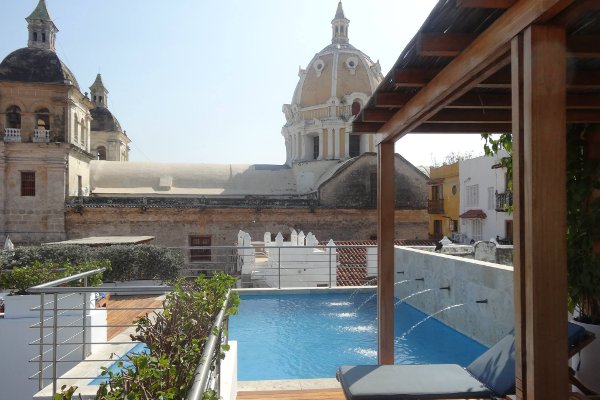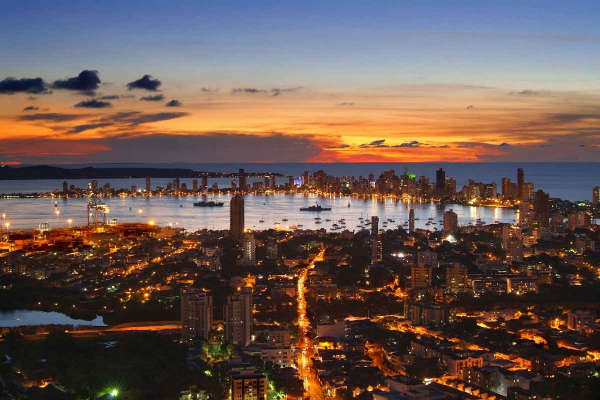Cartagena de Indias has a special place in my heart. I visited this city many times as child, as a young teen on school trips, and on the first family holiday with my husband.

The Walled City
The famous colonial walled city is full of color, magic, and mystery. You cannot help but get lost in its charming embrace as you wander the narrow streets. The port city was founded in 1533 and became home to some of the best examples of Spanish Colonial architecture.

Bocagrande the Big Mouth
Cartagena has been a tourist destination since the 1970’s when the area of modern Bocagrande (Big mouth in Spanish) was constructed on reclaimed land. Originally built to accommodate oil and gas workers, it has a high concentration of high end hotels, restaurants and apartment blocks.
As tourists flooded into Bocagrande, the old town of Cartagena began to be regenerated and hotels began to open in the old colonial and historical buildings.
Today Bocagrande is one of the most affluent neighborhoods in all of Colombia, and the old town area a UNESCO World Heritage site.

Safety in Cartagena de Indias
Cartagena appears to typify Colombia’s progression from a no-go zone to global tourism hot spot. If the truth be known, Cartagena has mostly avoided the problems the rest of the country has faced. The drug traffickers and guerrillas largely left Cartagena untouched, in part due to the fact many of the high ranking criminals had condos in Bocagrande where they vacationed with their families.
There were a few bombings at the height of the drug wars which depressed the Cartagena tourism trade for a few years, but it eventually bounced back, and these were rare incidents compared to other Colombian cities. I visited the area in 1999 and the city was back on its feet and once again thriving.
Like all Colombian cities you should always take care and not expose yourself to risk. Just be careful of pickpockets and petty theft. The walled city is particularly safe during the day when you will find police officers on most blocks and public areas.
Street Hawkers
Street performers can be a little annoying on occasion. To avoid a personal hiphop or beatboxing performance while you are trying to eat your pargo fritto, polity but firmly say “no garcias” if they assemble in front of you. Generally speaking, inside the walled city anyone trying to sell you a product, service, or performance will take a firm “no” on first insistence. However, on the local beaches the hawkers and feet washers can be a little more persistent. You may need to be more pronounced with your refusals and expect it to take a few attempts to register.
Getting to Cartagena
Rafael Núñez International Airport (CTG)
Named after the Colombian president (1880-1884) who wrote the Colombian national anthem. CTG airport is located in the Northern neighborhood of Crespo. You can travel from the airport to Bocagrande by car in about 20-30 minutes and to the walled city in 15-20 minutes.
10 international flights (some are seasonal) –
Canada: Montréal–Trudeau, Toronto–Pearson
U.S.A: New York–JFK, Miami, Atlanta, Fort Lauderdale
Europe: Milan–Malpensa, Amsterdam,
Latin America: Perú Lima, Panama City,
7 Domestic Flights –
Bogotá, Cali, Medellín, Pereira, San Andrés Island, Bucaramanga, Cúcuta
Coaches to Cartagena
Bogota: Travel time approx. 22 hours.
Medellin: Travel time approx. 13-14 hours.
Where to Stay in Cartagena
Checkout the Casa Claver Boutique Hotel in the walled city.


